Journalists gain rare access to North Waziristan ghost town
- Published
BBC Urdu's Haroon Rashid was among the journalists shown the town of Miranshah
Three weeks into its offensive against militants in the tribal region of North Waziristan, Pakistan's military has taken the media to see Miranshah, formerly a hotbed of Taliban activity. BBC Urdu's Haroon Rashid reports from a town where in some shops suicide jackets were apparently on sale.
Miranshah looks like a ghost town.
As our helicopter hovered over North Waziristan's main town, not a single soul could be seen out in the bazaars or markets.
Local residents and shopkeepers had left in a hurry, it seems. In some parts of the bazaar most of the shops were half open, with saleable goods still on display as if the shopkeepers had just gone for prayers or a short break.
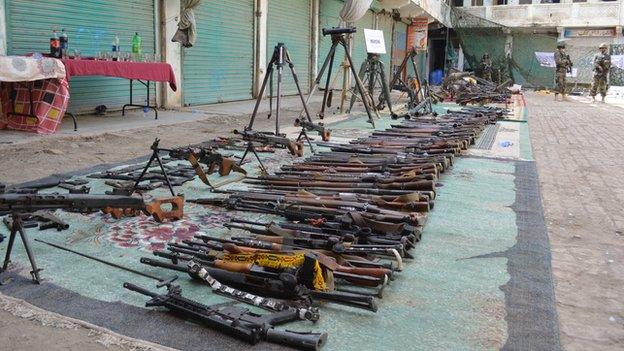
A lone donkey was the only living thing apart from soldiers and the media.
Until recently Miranshah was headquarters for the Pakistani Taliban (TTP) and a host of other insurgent groups operating in the region and across the border in Afghanistan.
But last month the Pakistani military launched an offensive which it says will rid the area of the Taliban and their allies.
An aerial bombardment of suspected militant positions was followed by boots on the ground, despite reports (including this BBC article) suggesting many of the militants had been allowed to escape before the army moved in.
Some parts of Miranshah look to have borne the brunt of the war.
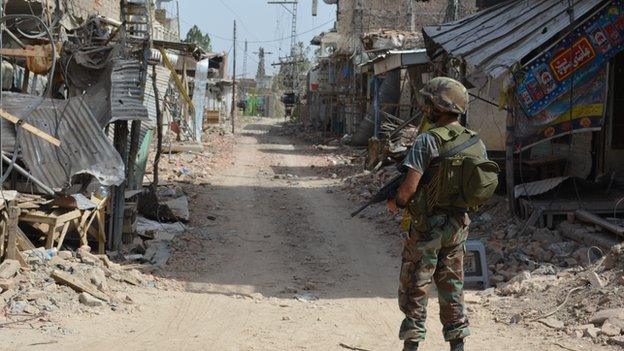
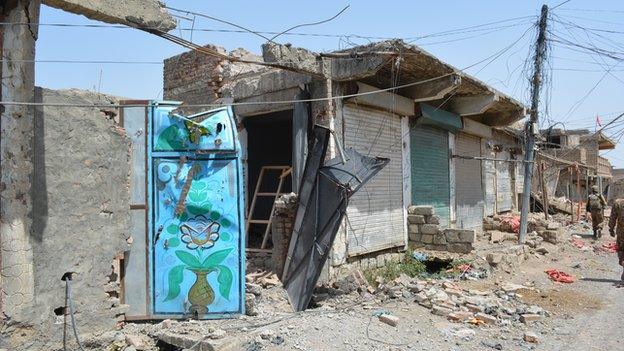
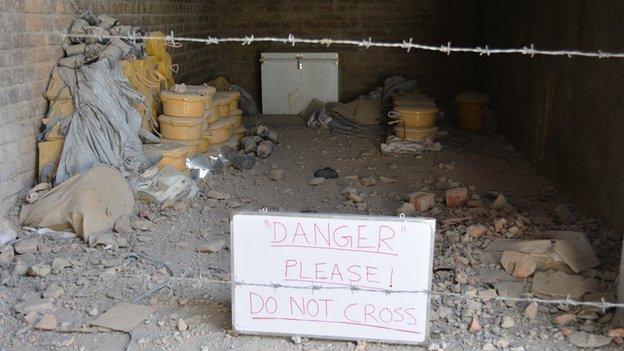
The army says booby traps and rockets fired by retreating militants are the reason. According to the military, 80% of Miranshah is now clear but the huge task of securing the rest of North Waziristan remains.
Maj Gen Zaffar Khan, the man leading the troops in North Waziristan, told the BBC they had seriously disrupted the main command-and-control centre of the militants.
"North Waziristan was an epicentre of terrorism. Militants of all colour and creed were based here. The local population was made a hostage by them."
Maj Gen Khan admitted militant leaders had been able to flee the area
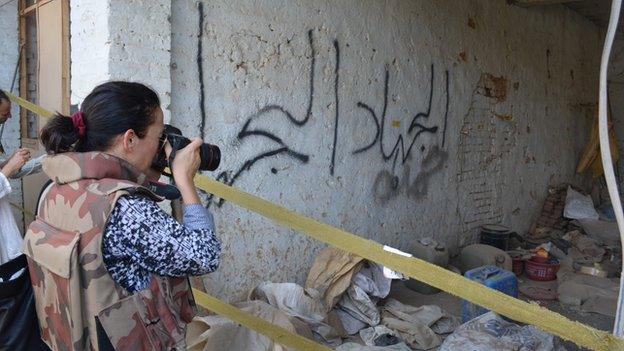
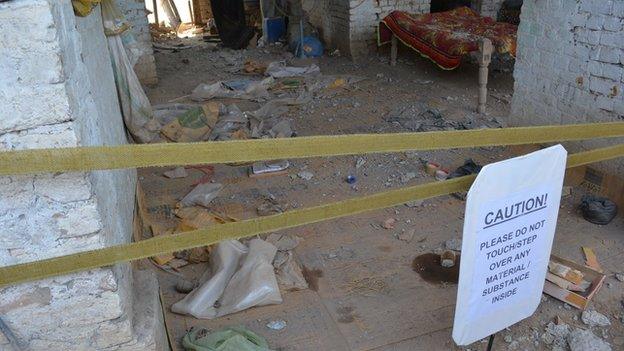

He admitted that much of the militant leadership had left the area before the operation began, but insisted the army would not let the region become a militant sanctuary again.
Sealing a place 100% was not possible, he said, but "even if someone has managed to escape, at least he would not be allowed to come back".
Journalists were shown dismantled IED (improvised explosive device) factories, and operational command and living quarters in a mosque basement.
When a reporter joked that he might be killed by an IED, a soldier replied that he would have been by now - but the army was looking after him so he would be fine.
Not only in shops but at these factories and living quarters it was evident people had left in a hurry.
.jpg)
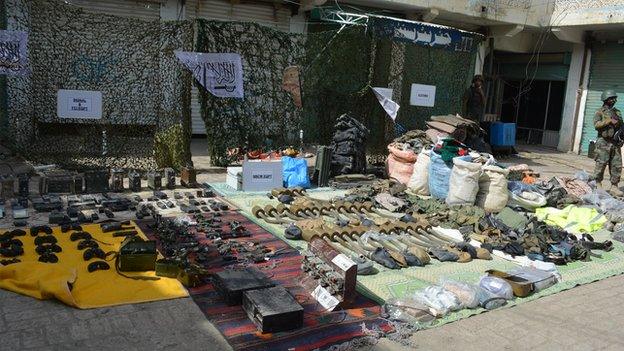
The army took us to a cluster of shops at the back of the main market. It had a dozen shops and all had bomb-making chemicals or tools and even ready-made suicide vests for sale.
I found a letterhead of the Islamic Emirate of Afghanistan - what the Taliban call their regime.
It's not clear whether this letterhead has anything to do with the elusive Haqqani network, which focuses its fire against Nato and Afghan troops and which Pakistan has long denied supporting.
Maj Gen Khan refused to say how long the operation would continue.
"It will be very premature to put a date on it. I know hundreds of thousands of people are displaced, but we will have to bear it together."